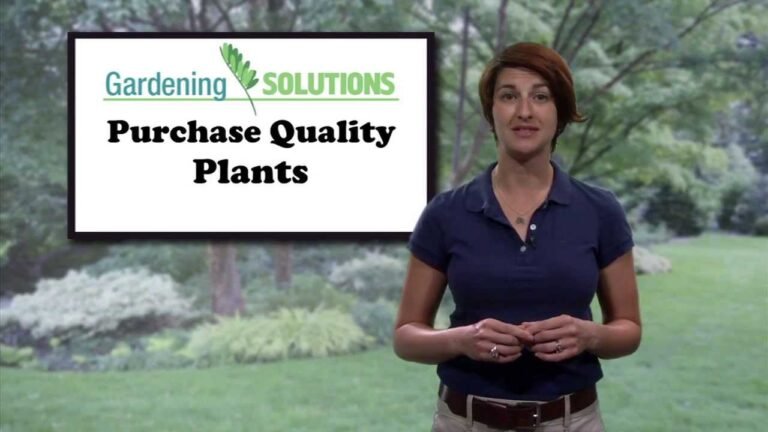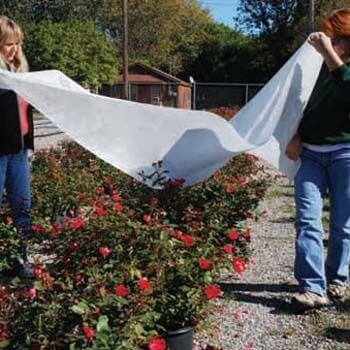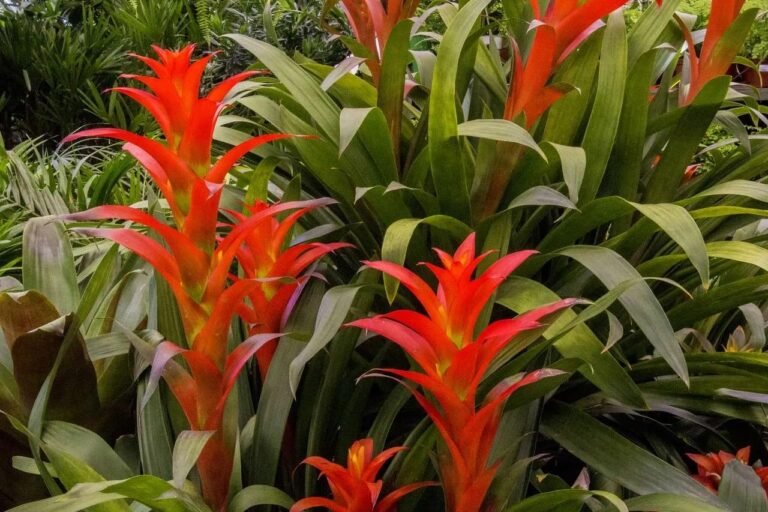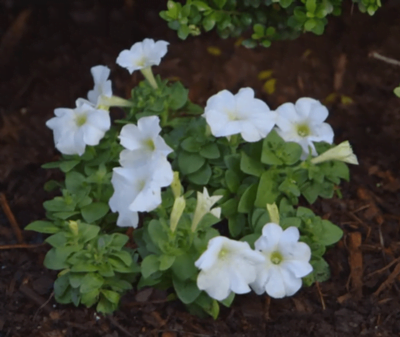Types of Florida Ground Cover Plants

Since the cost of maintaining a lawn has risen and time or effort needed to keep it in good shape, some homeowners are reducing size by replacing some areas with ground cover. These types of Florida Ground cover plants can sometimes be more practical to cover an area in a landscape than turfgrass. Enviroscaping has become a new trend today since ground cover for Florida landscaping can provide a surprising amount of energy savings during the summer months of high temperatures.
Adaptability of Ground Cover Plants
Ground cover is more adaptable to a wider range of environmental conditions. For example, turf such as ST. Augustine grass does not grow well in extreme shade. It is also difficult to establish turf in areas that are consistently wet or dry. There are several types of ground cover plants that can handle different problem situations. There is ground cover for sun, shade ground covers, drought tolerant ground cover, flowering ground cover, you can find a type to meet any location.
Selecting Landscape Ground Covers
Proper selection can help minimize the need for lawn irrigation, fertilization, and mowing after ground covers are established. Excellent choices for low maintenance shade ground covers are, “Liriope” and “Mondo grass”. For areas with wet soil, ground cover plant “Lippia” also known as “Matchweed” has outstanding tolerance for this situation.
Juniper such as “Compacta” and “Blue Pacific” are drought tolerant ground cover, great for dry areas from lack of irrigation or rainfall. Woody ground cover species will offer a variety flowering ground cover that have colors and textures that will surpass any turf. Ground cover plants can complete any landscape and will compliment trees and shrubs.
Establishment of Ground Covering Plants
Ground covers are generally fully mature in two years. Some can require a little more or less time to become mature. During the establishment period to insure strong and quicker growth a regular program of fertilization, watering, and weed control is needed. The usage of mulch will aid in water retention for new plantings.
Mulch will also help the root system so they can spread faster, especially ground cover that root along their stems. Once established many types of Florida ground cover plants need only minimal trimming to keep them in shape and within the selected area.
Selection and types of ground cover plants where you live will depend on your location in Florida, north, central, or south. Some plants can be used in all areas while some are suited for a specific region. Check your local garden centers and nurseries for what is available to be planted in your area.
Types of Florida Ground Cover Plants
Here is a list with names of ground cover Florida for the regions Northern, Central, and Southern Florida, (With Light Requirements).
Best Ground Cover For North Florida |
|
|---|---|
| Beach Morning Glory | Full Sun |
| Carolina Jasmine | Full Sun, Part Shade |
| Chinese Juniper (Parsoni, Varigata) | Full Sun |
| Creeping Juniper (Bar Harbor, Blue Rug ) | Full Sun, Part Shade |
| Daylilly | Full Sun, Part Shade |
| Dichondra, | Full Sun, Part Shade, Shade |
| Dwarf Yaupon Holly | Full Sun |
| Japanese Holly | Full Sun, Part Shade |
| Liriope | Full Sun, Part Shade, Shade, (Depending On Species) |
| Mondo Grass | Full Sun, Shade |
| Minema Jasmine | Full Sun, Part Sun, Shade |
| Lippia (Match Weed) | Full Sun, Part Sun, Shade |
| Shore Juniper (Compacta, Blue Pacific) | Full Sun, Part Shade |
| Society Garlic | Full Sun |
Ground Covering Plants For Central Florida |
|
| Asparagus Fern | Full Sun |
| Velvet Plant | Part Shade, Shade |
| Wandering Jew | Full Sun, Part Shade, Shade, |
| Asiatic Jasmine | Full Sun, Part Shade |
| Beach Morning Glory | Full Sun |
| Begonia | Full Sun, Part Shade (Depending On Species) |
| Blue Daze | Full Sun, Part Shade |
| Boston fern | Shade |
| Bromeliad | Shade, Part Shade (Depending On Species) |
| Carolina Jasmine | Full Sun, Part Shade |
| Chinese Juniper (Parsoni, Varigata) | Full Sun |
| Creeping Juniper (Bar Harbor, Blue Rug) | Full Sun, Part Shade |
| Dichondra | Full Sun, Part Shade, Shade |
| Daylilly | Full Sun, Part Shade |
| Dwarf Lantana | Full Sun |
| Dwarf Lilly | Shade |
| Dwarf Yaupon Holly | Full Sun |
| English Ivy | Shade |
| Heather | Full Sun, Part Shade |
| Holly Fern | Shade |
| Japanese Holly | Full Sun, Part Shade |
| Liriope | Full Sun, Part Shade, Shade (Depending On Species) |
| Lippia (Match Weed) | Full Sun, Part Shade, Shade |
| Mondo Grass | Full Sun, Shade |
| Mimosa | Full Sun, Part Shade |
| Minema Jasmine | Full Sun, Part Shade, Shade |
| Periwinkle (Vinca) | Full Sun |
| Society Garlic | Full Sun |
| Shore Juniper (Compacta, Blue Pacific) | Full Sun, Part Shade |
| Trailing Lantana | Full Sun |
Ground Cover Plants For Southern Florida |
|
| Asparagus Fern | Full Sun, Part Shade |
| Aloe Plant | Full Sun, Part Shade |
| Asiatic Jasmine | Full Sun, Part Shade |
| Begonia | Full Sun, Part Shade (Depending On Species) |
| Beach Morning Glory | Full Sun |
| Blue Daze | Full Sun, Part Shade |
| Bromeliad | Shade, Part Sun (Depending On Species) |
| Boston Fern | Shade |
| Carolina Jasmine | Full Sun, Part Shade |
| Chinese Juniper (Parsoni, Varigata) | Full Sun |
| Creeping Juniper (Bar Harbor, Blue Rug) | Full Sun, Part Shade |
| Daylilly | Full Sun, Part Shade |
| Dichondra | Full Sun, Part Shade, Shade |
| Dwarf Lantana | Full Sun |
| Dwarf Lilly | Shade |
| Dwarf Yaupon Holly | Shade |
| English Ivy | Shade |
| Heather | Full Sun, Part Shade |
| Heartleaf Philodrendrom | Part Shade, Shade |
| Holly Fern | Shade |
| Japanese Holly | Full Sun, Part Shade |
| Liriope | Full Sun, Part Shade, Shade (Depending On Species) |
| Leather Leaf Fern | Shade |
| Lippia (Match Weed) | Full Sun, Part Shade, Shade |
| Mondo Grass | Full Sun, Shade |
| Mimosa | Full Sun, Part Shade |
| Minema Jasmine | Full Sun, Part Shade, Shade |
| Oyster Plant | Full Sun, Part Shade, Shade |
| Pothos | Part Shade, Shade |
| Periwinkle (Vinca) | Full Sun |
| Perrennial Peanut | Full Sun |
| Snake Plant | Part Shade, Shade |
| Society Garlic | Full Sun |
| Spider Plant | Part Shade, Shade |
| Shore Juniper (Compacta, Blue Pacific) | Full Sun, Part Shade |
| Swedish Ivy | Shade |
Conclusion
In areas in a landscape that are not suited for turf, using these types of Florida ground cover plants is the best way to go. Many types of ground covers are available to handle just about any situation. Since ground covering plants are easier to maintain than turf, they are sometimes more practical to use in landscaping. Homeowners having problems with certain locations in their landscape can use ground cover as the solution.






Here in Melbourne, Fl we have a plant that grows in the medians, along side of the road, in sandy soil, in short everywhere. It has small slender leaves that are pointed, and small flowers that are white with a pink or lavender tint. The flowers seem to close up at night, and the whole plant is no more than 1-2 inches in height. They start with one central root and send out runners from there. I tried to transplant them but they die in one day. Can you please tell me what these are and where I might get them. The yard I have is all sand and these would be the perfect ground cover for it. Pleas help.
Esther,
It could be Purslane (Portulaca), since the flowers on this type of plant close at night and open during the day. It is a low growing spreading plant that needs full sun for the flowers to open up.It would be good to plant as a roadside plant, if it was planted by the county.
You could take a cutting to your local garden center or nursery and ask them if they carry that type of plant. Also, you could call, or go by your local county extension service with a cutting and ask them. They might already know what is being planted along your county roadsides. Plus they can give you some tips on growing plants from cuttings.
I hope I have been helpful,
Kurt
Hi Kurt,
I didn’t know that vinca and English Ivy would grow well in Southern Florida. Does that include the hybrids like ‘Ralph Shugert’ as well as the common vinca variety?
This is a popular question that I get from Florida customers. Am thrilled to find your ground cover list so I can be more helpful to them.
Best,
Cheryl
Cheryl,
I believe Vinca ‘Ralph Shugert’ grows well in Hardiness Zones 4,5,6,7,8,9. Most areas in Southern Florida are in zones 10-11. However, some areas in South Florida can be considered to be in zone 9, since zones in Florida vary depending on the exact location.
Zones in this state are not always determined just by the region. Even though Florida is separated into North, Central, and South, the zones vary in locations. The zones are rather spread out and not so define across the state.
Here is a link to the USDA Plant Hardiness Zone Map website, which has a map for Florida broken down by counties and the various major cities in the state. Go to the top right on the home page and click on ‘Select a State’. Plus, it has zone maps for the other states in the U.S. You can select them by state or by Zip Code. http://planthardiness.ars.usda.gov/PHZMWeb/
I went to Greenwood Nursery in Google, is this the Greenwood Nursery in McMinnville Tn, are you part of the Greenwood team? Customers can find out what exact zone they live in Florida by them calling their County Extension Service.
I hope this information is helpful for you.
Kurt
Hello! I’m crazy about mondo grass – and I would really like it for my exterior. However, I was advised that it wouldn’t grow well because I had too much sun. I’ve heard mixed reviews about how much / little sun mondo grass can handle. I live in Davenport (central) FL and would love to hear some good news about using mondo, or something similar. Thank you!
Ashley,
Here is some information about Mondo grass that I hope will be helpful…
It is widely planted as a ground cover, underneath tree canopies where turfgrass won’t grow, along walkways, driveways, used for borders, or as a mass planting. It does spread and if it grows into an area not wanted, it can be difficult to be removed.
It does great in locations with full shade or partial sun (filtered Sunlight). It can take some morning direct sun, as long as it gets afternoon shade. Early morning sun would be preferred. Too much direct midday or afternoon sun can discolor the leaves.
Mondo grass needs regular irrigation, with just enough time between watering for it to dry out a little bit. However, if it stays too dry for long periods, the tips of the leaves can turn brown and will stay that way for a long time.
Mondo grass grows well in plant hardiness zones 7-11, and since you live in central Florida which is generally zones 9-10, it should grow well in your area.
If the location you want to plant ground cover is in full direct sun most of the day, then perhaps you might like the plant ‘Perennial Peanut’. It is a low-maintenance plant that does best in full sun, loves hot weather, blooms all summer long with golden flowers. It is often found in central Florida planted in mediums on roads by local counties in Florida, and has become a favorite of Florida homeowners.
Kurt
Correct, we in McMinnville, TN.
I looked at the county/by/county zones and see what you mean about how it varies going from mid into southern Florida. Actually,I do refer them to their local extension office. Plus, I forward many articles from the Univ. Florida Extension Site to help customers/visitors learn more about their desired topic.(UFL is one of my favorite extension reference sites so I’m always sharing and quoting them.)
I appreciate the tips.
Thank you.
Cheryl
Kurt,
Thank you very much for your help! I will have to really see what sort of sun activity my front gets before making a final decision. I do like the Perennial Peanut 🙂 Maybe I can keep my mondo grass for around my trees – the best of both world. Call me greedy!!!
All my best!